
Ali Mostfa
Senior Lecturer in Linguistics & Intercultural studies, Lyon Catholic University
Address: Coise, Rhône-Alpes, France
Address: Coise, Rhône-Alpes, France
less
Related Authors
Silver Rattasepp
University of Tartu
Edith Szanto
University of Alabama - Tuscaloosa
Marc Champagne
Kwantlen Polytechnic University
Kalevi Kull
University of Tartu
Florin Curta
University of Florida
Peeter Torop
University of Tartu
Fabio Vicini
Università di Verona
Mathieu Tillier
Université Paris-Sorbonne (Paris IV)
Simon Wolfgang Fuchs
The Hebrew University of Jerusalem
Islam Dayeh إسلام دية
Ghent University
InterestsView All (8)

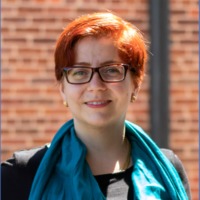
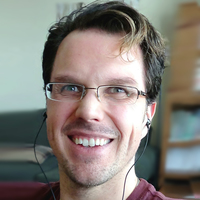
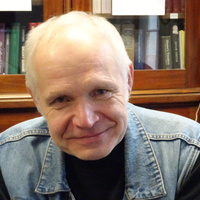


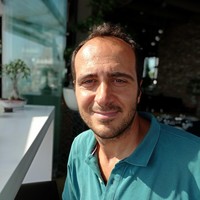

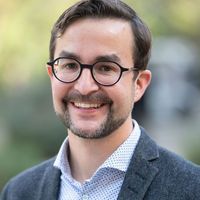
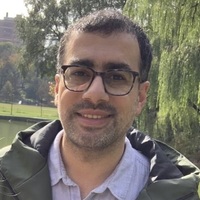
Uploads
Papers by Ali Mostfa
En janvier 2023, la décision de Rabat de mettre fin aux fonctions de Mohamed Benchaâboum, ambassadeur du royaume à Paris depuis seulement un peu plus d’un an, plonge les relations diplomatiques entre la France et le Maroc dans la crise. Aucune nomination n’a été annoncée, laissant planer l’incertitude.
De la rupture du cessez-le-feu au Sahara occidental et la normalisation de relations diplomatiques avec Israël fin 2020 aux élections législatives prévues le 8 septembre 2021, l’année écoulée au Maroc a été intense sur les scènes intérieure et extérieure.
This research aims to articulate the community dimension and the urban public space in the context of liberal societies. Public space leads to the question of community and vice-versa, as both of them are intimately linked. This perspective provides the opportunity to analyse the nature of religious manifestations, their expressions and their reception as ‘counter-discourses’. The liberal public space being the place of individualities, the community dimension, especially the religious one, can be interpreted as a position, an action and a form of counter-power.
In connection with these questions, we will also be led to examine the issue of religiosity as being shaped by processes inherent to the constitution of public space in the liberal context. A space that enshrines the individual dimension of conformity while rejecting the communitarian reality.
From this conceptual framework, how does the public space contribute to the emergence of forms of religiosity and domestication of the sacred? What does it mean to be visible today? Would visibility be a means of expressing a sense of belonging to a group or an instrument of self-construction, which could be exclusively personal?
Rédouane Abouddahab, Pascal Bataillard. ÉCRITURE ET LIBÉRATION. Trauma, fantasme, symptôme. MERRY WORLD, pp.213-237, 2009, Coll. Anglophilia.
un rapport dissymétrique
Ali Mostfa
En pénétrant puissamment les analyses académiques occidentales et arabes, la religion s’érige comme facteur explicatif et grille de lecture des conflictualités du monde qui nous entourent. Le discours religieux en tant que catégorisation simplificatrice et analyse hautement idéologique, agit en tant que bruit de fond permanent et lancinant, parfois étourdissant (Georges Corm, La question religieuse au XXIe siècle) lorsqu’il s’agit de crises purement géopolitiques. L’optique religieuse tend non seulement à confessionnaliser à tort et à travers la réalité du monde d’aujourd’hui, elle engendre volontairement de fausses perceptions tout en ranimant et en manipulant des mémoires anciennes qui hantent certains héritages culturels. Une fois réanimées, les identités meurtries sont capables d’enraciner durablement entre les peuples les rapports de haine et d’agressivité.
En janvier 2023, la décision de Rabat de mettre fin aux fonctions de Mohamed Benchaâboum, ambassadeur du royaume à Paris depuis seulement un peu plus d’un an, plonge les relations diplomatiques entre la France et le Maroc dans la crise. Aucune nomination n’a été annoncée, laissant planer l’incertitude.
De la rupture du cessez-le-feu au Sahara occidental et la normalisation de relations diplomatiques avec Israël fin 2020 aux élections législatives prévues le 8 septembre 2021, l’année écoulée au Maroc a été intense sur les scènes intérieure et extérieure.
This research aims to articulate the community dimension and the urban public space in the context of liberal societies. Public space leads to the question of community and vice-versa, as both of them are intimately linked. This perspective provides the opportunity to analyse the nature of religious manifestations, their expressions and their reception as ‘counter-discourses’. The liberal public space being the place of individualities, the community dimension, especially the religious one, can be interpreted as a position, an action and a form of counter-power.
In connection with these questions, we will also be led to examine the issue of religiosity as being shaped by processes inherent to the constitution of public space in the liberal context. A space that enshrines the individual dimension of conformity while rejecting the communitarian reality.
From this conceptual framework, how does the public space contribute to the emergence of forms of religiosity and domestication of the sacred? What does it mean to be visible today? Would visibility be a means of expressing a sense of belonging to a group or an instrument of self-construction, which could be exclusively personal?
Rédouane Abouddahab, Pascal Bataillard. ÉCRITURE ET LIBÉRATION. Trauma, fantasme, symptôme. MERRY WORLD, pp.213-237, 2009, Coll. Anglophilia.
un rapport dissymétrique
Ali Mostfa
En pénétrant puissamment les analyses académiques occidentales et arabes, la religion s’érige comme facteur explicatif et grille de lecture des conflictualités du monde qui nous entourent. Le discours religieux en tant que catégorisation simplificatrice et analyse hautement idéologique, agit en tant que bruit de fond permanent et lancinant, parfois étourdissant (Georges Corm, La question religieuse au XXIe siècle) lorsqu’il s’agit de crises purement géopolitiques. L’optique religieuse tend non seulement à confessionnaliser à tort et à travers la réalité du monde d’aujourd’hui, elle engendre volontairement de fausses perceptions tout en ranimant et en manipulant des mémoires anciennes qui hantent certains héritages culturels. Une fois réanimées, les identités meurtries sont capables d’enraciner durablement entre les peuples les rapports de haine et d’agressivité.